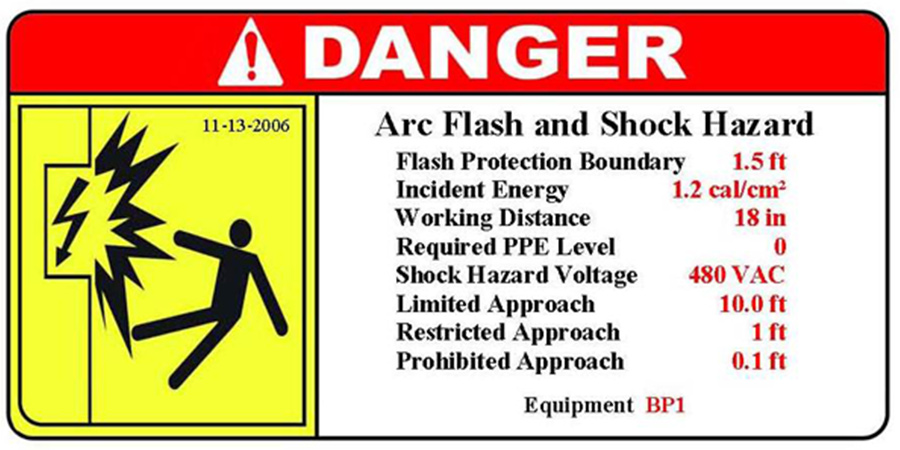Arc Flash Risk Management

An arc flash occurs amongst the live conductors or between a conductor and the ground. The current from any of the live conductor leaves its normal directional flow, travels through air and enters another conductor or to the ground. The radiant energy released by an electric arc is capable of permanently injuring or killing a human being at distances of even up to 20 feet. The workers can be thrown against a wall due to the extreme pressure of a blast. The hospitalization records indicate that the arc flash incidents are frequent in India. A simple reason can contribute to serious arc blast incidents. The US Bureau of Labor Statistics reports of the previous 10 years reflect 2,000 fatal and more than 24,000 non-fatal electrical injuries sustained from an arc flash.
The extent of the injuries depend on
- Distance of the worker from the hazard
- Heat
- Tripping time of the circuit.
The typical results of an Arc Flash are:
- Heat from more than 35,000 degrees F temperature.
- Flying molten metal objects can injure others present in the line of fire.
- Burns (The ordinary clothing shall burn on to the skin of a worker).
- Rapidly spreading fire into the building or an installation.
- High pressures more than 2,000 lbs. per sq. inch that create a blast.
- Higher level sound more than 140 dB, which is as loud as a gun.
People are required to carry out maintenance, diagnostics and testing works on or near energized electrical circuits. Therefore, it is important to calculate the arc flash distance for all locations where the voltages used are more than 50 volts. There are two methods used to determine the protection and Personal Protective Equipment requirements in each situation. i.e. engineering analysis and a table method.
Best Practices for Complying with NFPA 70E standards
- Preventive Maintenance
- Risk Assessment
- Labeling and Hazard Communication Plan
- Design and Method Reviews
- Accurate Single-Line Diagrams
- Short Circuit and Coordination Studies
- Electrical Safety Program Review/Development
- Arc Flash Training Program and PPE Plan Development
- Documentation
- Periodic Reviews
High level risk is associated when it comes to working on an electrical system. The electricity is an invisible energy. The incidents can be spontaneous and anyone in the vicinity could be at risk. The employers should prioritise, maintain their systems up to date and as far as possible fully de-energize the system to a zero potential during the maintenance. But if it is unavoidable and working on live system is essential, the employer is required to confirm it in advance so that the level of protection and safe system of work can be established in a proactive manner. The international organizations such as OSHA and NFPA have become increasingly proactive about providing and enforcing guidelines and standards for mitigating the risk and ensuring worker safety.
Many such important and perennial EHS topics have been covered in our publication B-Proactive ASK-EHS. For more visit:- http://www.ask-ehs.com/magazine/
Share your views and queries. Happy Reading.



Nice information about Arc Flash Risk Assessment,we are also providing the service on Arc Flash Risk Assessment.Visit Our Website
The arc flash is a dangerous phenomenon that occurs when working with electrical equipment. It’s vital to know about it and its reasons. Thank you so much for writing the post and explaining it in detail!